London’s top 10 secret Shakespearean spots
As the world marks the 400th anniversary of William Shakespeare's death, we delve into the dark mysteries of his time in London, searching for the hidden spots and sights that shaped Britain’s greatest ever playwright.
From drinking dens and punch ups to prostitute graveyards and lost works, here are our top 10 secret Shakespearean spots in the city.
1. Read the book that saved Shakespeare
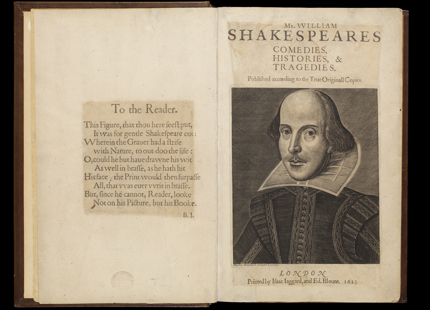 This book ensured Shakespeare’s labours weren’t lost forever
This book ensured Shakespeare’s labours weren’t lost forever(c) Victoria and Albert Museum, London
Flick through the First Folio at the V&A Museum, while it’s on display. Arguably the most important English language book to have existed, these pages ensured Shakespeare’s labours weren’t lost forever. As derivative duplicates of the Bard’s plays circulated in the city of London, two of his friends, John Heminge and Henry Condell, produced a true collection of Shakespeare’s work in 1623, which kept masterpieces like Macbeth alive.
How to visit: The First Folio is on display in the Theatre and Performance galleries at the Victoria and Albert Museum (tel: (020) 7942 2000; www.vam.ac.uk) until 21 September.
-------------------------------------------------------------------------------------
2. Get barred from the Bard’s boozer
 The George Inn held theatre performances in the yard
The George Inn held theatre performances in the yardCreative Commons / Bernt Rostad
We can’t actually be held accountable if you get slung out of this Southwark saloon, just as we can’t entirely be sure Shakespeare ever supped suds here. But the cosy low ceilings and cobbled yard of The George Inn next to London Bridge are the perfect place to pettifog either point. Living locally, it’s likely that the Bard visited, especially as the venue doubled as an Elizabethan playhouse. He may have even performed onstage.
How to visit: The George Inn (tel: 020 7407 2056) is located at 75-77 Borough High Street, near London Bridge station.
-------------------------------------------------------------------------------------
3. Shakespeare in censorship
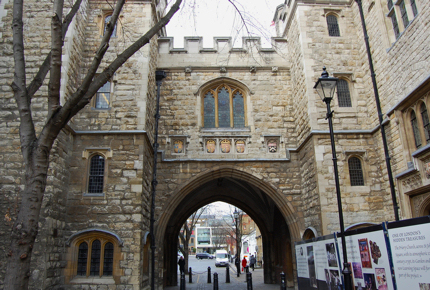 The Revels Office once resided inside St John's Gate
The Revels Office once resided inside St John's GateCreative Commons / Martha Heinemann
Peel away from Farringdon station and amble along to St John’s Square for a little known slice of Shakespearean history. The ancient St John’s Gate is impressive enough, but during Shakespeare’s time it is where the Master of the Revels sat. The Revels Office would decide which plays could be performed and what would be censored, so who knows what great works vanished within these very walls.
How to visit: The Museum of The Order of St John (tel: (020) 7324 4005; www.museumstjohn.org.uk) is free to enter and has guided tours on Tuesday, Friday and Saturday at 1100 and 1430.
-------------------------------------------------------------------------------------
4. Read through Will’s will
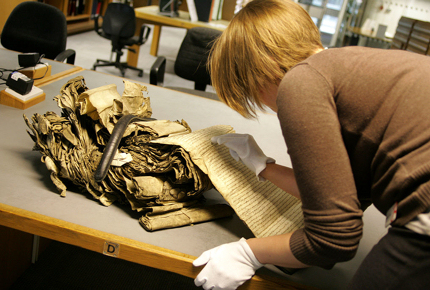 The National Archives in Kew still hold Shakespeare's will
The National Archives in Kew still hold Shakespeare's willThe National Archive
The demise of Britain’s greatest playwright came in the form of a fever he caught from a “merry party” hosted by fellow writer and friend, Ben Jonson. Before he exited the stage, he wrote a will leaving much of his estate to his eldest daughter. The original document can still be seen at The National Archives in the village of Kew, south west London. It includes one of only three examples of William Shakespeare’s signature in existence.
How to visit: To see the original document, visitors will need to register for a reader’s ticket at The National Archives (tel: (020) 8876 3444; www.nationalarchives.gov.uk). This can be done on the day of the visit but both ID and proof of address are required.
-------------------------------------------------------------------------------------
5. The Bard as a bruiser
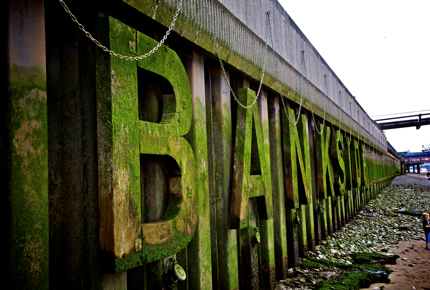 Bankside was once full of booze, bear-baiting and brawling
Bankside was once full of booze, bear-baiting and brawlingCreative Commons / Aurelien Guichard
Today, the Bankside area of London runs from the hubbub of Borough Market to beyond white-walled reimagining of Shakespeare’s Globe, but back when the Bard was in business it was full of booze, bear-baiting and brawling. Shakespeare, it seems, was involved in the latter when he and three assailants set upon William Waite in Bankside’s medieval streets. Summoned before a judge, the case was settled out of court.
How to visit: Bankside (tel: (020) 7928 3998; www.visitbankside.com) is best explored on foot. Start from London Bridge and work your way along to Blackfriars Bridge.
-------------------------------------------------------------------------------------
6. The poet’s (possible) product placement
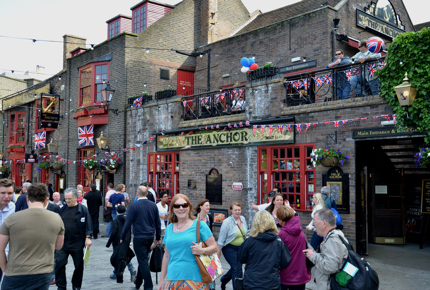 From brothels to boozers, the Bard wouldn't recognise Bankside
From brothels to boozers, the Bard wouldn't recognise BanksideCreative Commons / Michael Jones
“Thou that givest whores indulgences to sin,” slams the Duke of Gloucester to the Bishop of Winchester in Henry VI - a nod from Shakespeare towards to the Bishop’s control of Southwark’s stews (brothels). Awash with harlots known as Winchester Geese (their nickname came from the wheeze the girls omitted due to venereal disease), one popular prostitution house still stands: The Castle and the Hoop. Now a heaving tourist pub on London’s Bankside called The Anchor, the only stew you’ll find will be on the bar menu.
Also visit the Cross Bones graveyard on Redcross Way. This medieval burial ground was where the Winchester Geese were laid to rest. Today the spot is marked by ribbons and flowers tied to the gates.
How to visit: The Anchor (tel: (020) 7407 1577; www.taylor-walker.co.uk) is located on 34 Park Street, while the Cross Bones graveyard (www.crossbones.org.uk) is along Redcross Way.
-------------------------------------------------------------------------------------
7. Lift the curtain on Shakespeare’s first theatre
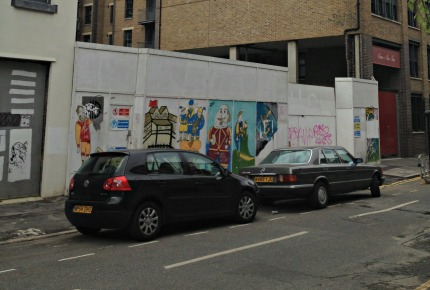 This is thought to be spot where The Theatre stood
This is thought to be spot where The Theatre stoodEmily Fahey
London’s stylish Shoreditch area is now brimming with tech heads, trendy taprooms and fashionable design houses, but in the 1500s it was famed for its theatres. As an actor, Shakespeare trod the boards at Britain’s first playhouse, The Theatre, which remained undiscovered until very recently. The spot can now be visited at New Inn Broadway, opposite the Amnesty International building. While not much to look at, if theatrical folklore is to be believed, the playhouse was taken down by its owner, Richard Burbage, shipped over the River Thames and re-erected as the original Globe.
How to visit: Head to 4-6 New Inn Broadway in Shoreditch and The Theatre was located in the vacant plot of land opposite Amnesty International. There is also a plaque at 18 Hewett Street commemorating The Curtain theatre, where Shakespeare is known to have acted too.
-------------------------------------------------------------------------------------
8. Act 1, Scene 1: the first production of Twelfth Night
 Middle Temple Hall is where Twelfth Night was first performed
Middle Temple Hall is where Twelfth Night was first performedCreative Commons / Matt Brown
Much of the city Shakespeare knew was lost in the Great Fire of London, but some spots still stand. Step up Middle Temple Court on Middle Temple Lane with its perfectly pruned gardens and imposing Elizabethan chamber. Its main hall comes with a double hammer-beam roof and carved wooden screen from the late 1500s, and it was in this very room that the first production of Twelfth Night took place in 1602. Little has changed since and the best way to savour the surroundings is over a weekday lunch in the hall itself.
How to visit: Middle Temple Hall (tel: (020) 7427 4820; www.middletemplehall.org.uk), located on Middle Temple Lane, is open to the public on weekdays from 1000-1200. Guided tours and lunches are also available but must be reserved ahead of a visit.
-------------------------------------------------------------------------------------
9. Visit London’s only Shakespearean shrine
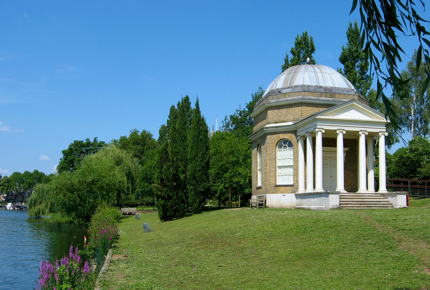 Garrick's Temple is London's only Shakespearean shrine
Garrick's Temple is London's only Shakespearean shrineCreative Commons / tpholland
Paddle upstream from the city of London and you’ll find David Garrick’s personal shrine to Shakespeare. When he was still alive, Garrick entertained his guests in this classical-style folly filled with Shakespearean souvenirs. Memorabilia included a signet ring, a dagger and a statue of the Bard (now in the British Museum), which Garrick is thought to have posed for himself. Sadly, much of it was auctioned off after his death, but with a sedate riverside setting and a replica of the Shakespeare statue, Garrick’s Temple is still worth an afternoon of your time.
How to visit: Garrick’s Temple (tel: 07880 790763; www.garrickstemple.org.uk) is open from 1400-1700 on Sundays (April to October). Group visits can be organised at other times.
-------------------------------------------------------------------------------------
10. Shakespeare in statues and stained glass
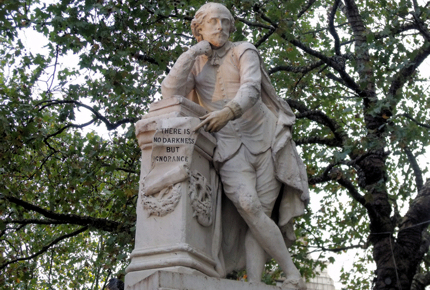 This statue of Shakespeare is one of only five in the city
This statue of Shakespeare is one of only five in the cityCreative Commons / Elliot Brown
Shakespeare aficionados will already know of the statues at Poet’s Corner and Leicester Square, and possibly even the reclining Bard in the echoes of Southwark Cathedral. Few though, head to the Gothic glory of St Helen’s Church in Bishopsgate under the shadow of The Gherkin. This was the Bard’s local parish in the 1590s and records showed he failed to cough up his tax here in 1597. A stained-glass window in the church depicts Shakespeare himself, showing the Bard has since been forgiven.
How to visit: St Helen’s Church (tel: (020) 7283 2231; www.st-helens.org.uk) can be found along Great St Helen's in Bishopsgate.
-------------------------------------------------------------------------------------
Do you have any Feedback about this page?
© 2026 Columbus Travel Media Ltd. All rights reserved. No part of this site may be reproduced without our written permission, click here for information on Columbus Content Solutions.









 You know where
You know where